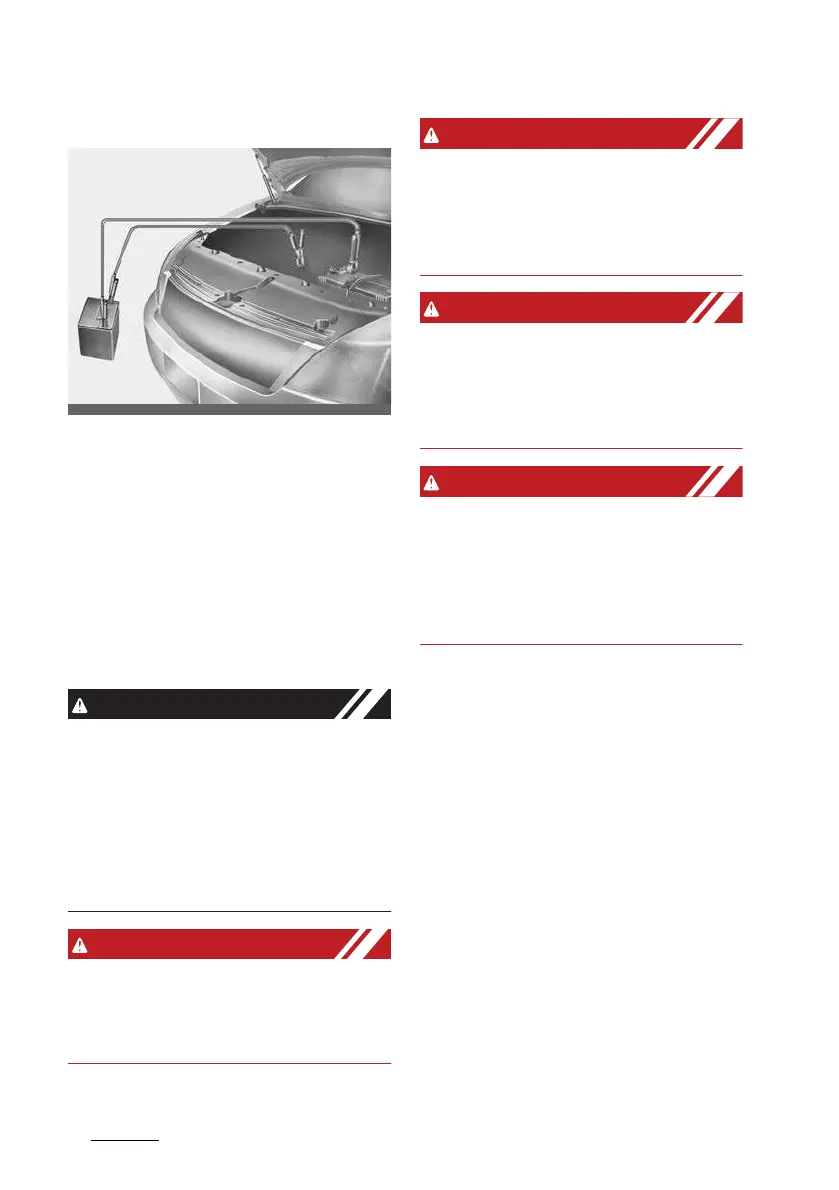What to do in an emergency
46
Emergency starting
Emergency starting
Connect cables in numerical order and
disconnect in reverse order.
Jump starting
Jump starting can be dangerous if done
incorrectly. Therefore, to avoid harm to
yourself or damage to your vehicle or
battery, follow these jump starting pro
-
cedures. If in doubt, we strongly recom
-
mend that you have a competent
technician or towing service jump start
your vehicle.
12 volt battery
Use only a 12-volt jumper system. You
can damage a 12-volt starting motor,
ignition system, and other electrical
parts beyond repair by use of a 24-volt
power supply (either two 12-volt batter
-
ies in series or a 24-volt motor generator
set).
Battery
Never attempt to check the electrolyte
level of the battery as this may cause the
battery to rupture or explode.
Frozen batteries
Do not attempt to jump start the vehicle
if the discharged battery is frozen or if
the electrolyte level is low, as the battery
may rupture or explode.
Battery
Keep all flames or sparks away from the
battery. The battery produces hydrogen
gas which will explode if exposed to
flame or sparks.
Sulfuric acid risk
When jump starting your vehicle be
careful not to get acid on yourself, your
clothing or on the vehicle. Automobile
batteries contain sulfuric acid.This is poi
-
sonous and highly corrosive.
Jump starting procedure
1. Make sure the booster battery is 12-
volt and that its negative terminal is
grounded.
2. If the booster battery is in another
vehicle, do not allow the vehicles to
come in contact.
3. Turn off all unnecessary electrical
loads.
4. Connect the jumper cables in the
exact sequence shown in the illustra
-
tion. First connect one end of a
jumper cable to the positive terminal
of the discharged battery (1), then
connect the other end to the positive
terminal of the booster battery (2).
Proceed to connect one end of the
other jumper cable to the negative

